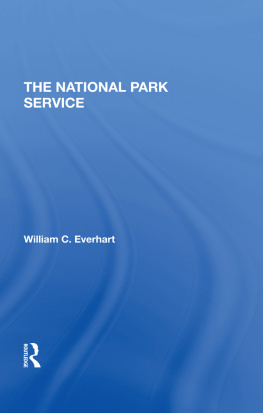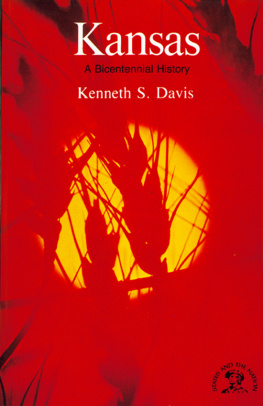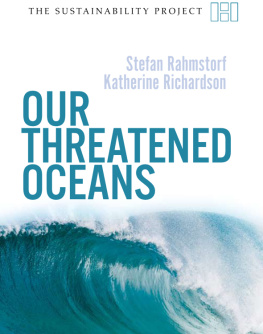Michael J. Everhart - Oceans of Kansas: A Natural History of the Western Interior Sea
Here you can read online Michael J. Everhart - Oceans of Kansas: A Natural History of the Western Interior Sea full text of the book (entire story) in english for free. Download pdf and epub, get meaning, cover and reviews about this ebook. year: 2017, publisher: Indiana University Press, genre: Science. Description of the work, (preface) as well as reviews are available. Best literature library LitArk.com created for fans of good reading and offers a wide selection of genres:
Romance novel
Science fiction
Adventure
Detective
Science
History
Home and family
Prose
Art
Politics
Computer
Non-fiction
Religion
Business
Children
Humor
Choose a favorite category and find really read worthwhile books. Enjoy immersion in the world of imagination, feel the emotions of the characters or learn something new for yourself, make an fascinating discovery.

- Book:Oceans of Kansas: A Natural History of the Western Interior Sea
- Author:
- Publisher:Indiana University Press
- Genre:
- Year:2017
- Rating:3 / 5
- Favourites:Add to favourites
- Your mark:
- 60
- 1
- 2
- 3
- 4
- 5
Oceans of Kansas: A Natural History of the Western Interior Sea: summary, description and annotation
We offer to read an annotation, description, summary or preface (depends on what the author of the book "Oceans of Kansas: A Natural History of the Western Interior Sea" wrote himself). If you haven't found the necessary information about the book — write in the comments, we will try to find it.
Oceans of Kansas: A Natural History of the Western Interior Sea — read online for free the complete book (whole text) full work
Below is the text of the book, divided by pages. System saving the place of the last page read, allows you to conveniently read the book "Oceans of Kansas: A Natural History of the Western Interior Sea" online for free, without having to search again every time where you left off. Put a bookmark, and you can go to the page where you finished reading at any time.
Font size:
Interval:
Bookmark:
Oceans of Kansas
Life of the PastJames O. Farlow, editor
KANSAS
A NATURAL HISTORY OF THE
WESTERN INTERIOR SEA
SECOND EDITION
MICHAEL J. EVERHART


This book is a publication of
Indiana University Press
Office of Scholarly Publishing
Herman B Wells Library 350
1320 East 10th Street
Bloomington, Indiana 47405 USA
iupress.indiana.edu
2017 by Michael J. Everhart
All rights reserved
No part of this book may be reproduced or utilized in any form or by any means, electronic or mechanical, including photocopying and recording, or by any information storage and retrieval system, without permission in writing from the publisher. The Association of American University Presses Resolution on Permissions constitutes the only exception to this prohibition.
This book is printed on acid-free paper.
Manufactured in China
Cataloging information is available from the Library of Congress.
ISBN 978-0-253-02632-3 (cloth)
ISBN 978-0-253-02715-3 (ebook)
1 2 3 4 5 22 21 20 19 18 17
Dedicated to my parents, Jack McKay Everhart (19222000) and Betty Lou Everhart (19231994)
But the reader inquires, What is the nature of these creatures thus left stranded a thousand miles from either ocean? How came they in the limestones of Kansas, and were they denizens of land or sea?
E. D. Cope, On the Geology and Paleontology of the Cretaceous Strata of Kansas (1872:319)
Twelve years have passed since I stopped researching and writing the original Oceans of Kansas. I was vaguely unsatisfied about not including all of the information that I wanted, but there had to be a stopping point in order to get the manuscript to the publisher. At the time, of course, I had no idea that I would have the opportunity to write a second edition and literally finish what I started. Since the original publication in 2005, many new discoveries have occurred in the Smoky Hill Chalk and other rocks deposited by the Western Interior Sea, and Ive been fortunate to be able to collect and to describe my share of them. Ive also benefited from the knowledge and experience of other paleontologists from outside Kansas and around the world in many co-authored papers. My research regarding the history of paleontology associated with the oceans of Kansas has also continued, and I have learned much more about the early collectors, as well as Cope and Marsh, and their discoveries in Kansas. The second edition presents a more complete view of the creatures that inhabited the oceans of Kansas during the Late Cretaceous, and also gives more credit to those less well known men who endured hardships on the Kansas prairie in the name of science. They are important because they represent the very beginnings of what we now consider to be modern paleontology. Amazingly, we are still finding new fossils in the Smoky Hill Chalk and experiencing some of the same thrills that I am sure were felt a hundred and fifty years ago.
Although I am almost a native Kansan and proud of my state, I have to admit that the drive across Kansas on Interstate 70 is not a major scenic experience if you are expecting mountains or other dramatic landscapes. While there are low hills and river valleys to be crossed along the way, the most visible change from east to west is going from a moderate number of trees to almost no trees. That being said, Kansas has many charms that are well hidden from those who are traveling as fast as they can to get across the state, and even from those who have lived here their entire lives. To me, as a paleontologist, that means a wealth of rock exposures that faithfully reveal a fossil record compiled over millions of years when Kansas was covered by a succession of Paleozoic and Mesozoic oceans. Note that I use the word oceans here in the broadest sense, since these bodies of water covered portions of a submerged continent (North America) and are more properly called seas.
I have been interested in fossils for about as long as I can remember. In grade school I had the usual curiosity about fossil shells and crinoids that were found in the limestone rocks to the east of where I lived. Growing up south of Wichita, Kansas, I spent quite a bit of time exploring along the banks of the Arkansas River, other streams, and the spoil piles of local sandpits. Occasionally I would find the teeth or bones of Pleistocene mammals. I think that was when I realized that they represented the remains of extinct animals that lived long ago in a very different Kansas. One of my first paleontology books was All About Dinosaurs by Roy Chapman Andrews. Although his dinosaur-hunting adventures in the Gobi Desert were interesting, in two chapters in the book that discussed the marine reptiles and pterosaurs from the Kansas chalk, his description of life in the Cretaceous oceans started me wondering about what might be out there.
Somewhere along the way, I saw my first shark teeth and fish bones from the chalk of western Kansas. A field trip during a vertebrate paleontology course in college provided me with my first experience collecting fossils in the Smoky Hill Chalk, and I have been hooked on that particular time span ever since.
Kansas has a wide variety of fossils, from very old Mississippian rocks (more than 340 million years old) in the extreme southeastern corner of the state to the Late Cretaceous rocks (about 75 million years old) of northwestern Kansas, which were deposited as bottom muds in the series of Paleozoic and Mesozoic oceans that covered Kansas. More recently deposited Tertiary sediments (nonmarine) containing the remains of extinct terrestrial animals are found along and in streams and rivers statewide. That means you can find fossils just about anywhere in the state.
If you are interesting in collecting fossils in Kansas, the first thing to decide is what kind of fossils you want to collect. The best place to start is a library or bookstore. I would recommend two books as must have references for amateur fossil hunters in Kansas: Kansas Geology, edited by Rex Buchanan (1984), and Roadside Kansas, by R. C. Buchanan and J. R. McCauley (1987, 2010). Once you have an idea of what kind of fossils you want to find and where to look for them, youre ready to get serious about it. There are many places where rocks are exposed and accessible to collectors. The most important thing to remember, however, is that most fossils in Kansas are on private property. You must have permission from the owner to enter the land and to collect. Always respect the property of others, take proper safety precautions, never leave your trash behind, and, most of all, have fun.
My intent in writing this book is to provide information about many of the animals that lived during the Late Cretaceous and, to some extent, the people who discovered their fossil remains and described them. Excellent sources of information are available in print and on the Internet regarding other kinds of fossils that can be found in Kansas, and I encourage you to spend some time learning about paleontology in general.
So many people, over the years, have helped me learn and understand the paleontology of Kansas during the Late Cretaceous that it is difficult to know where to begin in expressing my appreciation. Youve all heard the adage that it takes a village to raise a child. I can certainly testify that it also takes one to write a book.
Next pageFont size:
Interval:
Bookmark:
Similar books «Oceans of Kansas: A Natural History of the Western Interior Sea»
Look at similar books to Oceans of Kansas: A Natural History of the Western Interior Sea. We have selected literature similar in name and meaning in the hope of providing readers with more options to find new, interesting, not yet read works.
Discussion, reviews of the book Oceans of Kansas: A Natural History of the Western Interior Sea and just readers' own opinions. Leave your comments, write what you think about the work, its meaning or the main characters. Specify what exactly you liked and what you didn't like, and why you think so.










